Description
Names (plural) in North American Boletes: Boletus fraternus AND Boletus rubellus
Genus: Hortiboletus
- Genus 2: Boletus
- Genus 3: Xercomus
Species: flavorubellus
- Species 2: rubellus
- Species 2: fraternus
Common Name:
Tells: Bright yellow cap flesh slowly stains bluish-green, while stem flesh stains blue/green on top & orange by the base. Very deep yellow xerocomoid pores stain blue/green.
Other Information: Small (<2″) dark red cap fades to brick-red & often cracks w/age. Often-long yellow stem often has vertical lines (striations) at the top; darkens from orange-red spots going down; & turns brown where handled. Hard to distinguish from Hortib. campestris (Field Bolete). The main distinction is that rubellus’ cap cracks even more, and campestris has pure yellow stem flesh (not orange by the base) and lacks the striations at the stem’s apex. Likes grassy areas near oak & beech.
Science Notes: DNA testing merged B. fraternus into B. rubellus, moved the combination to a new genus called Hortiboletus, and has now clarified that rubellus is a European species, and we in North America have a new critter called H. flavorubellus. Subsequent work also shows that Hortiboletus is a sister genus to Xerocomellus if you want to be geeky, which makes sense because the pores are so noticeably twisted and xerocomoid.
Edibility: Good. (B. rubellus was listed as “unknown” in the field guides, but B. fraternus was known to be a good edible).
CHEMICAL TESTS:
- NH4OH (Ammonia): No data.
- KOH: Cap flesh turns dull orange.
- FeSO4 (Iron Salts): Cap flesh turns olive-green.
Links:
 |
0 |  |
0 |  |
113 (fraternus)
152 (rubellus) |
 |
225 |

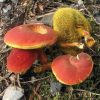
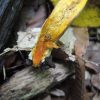
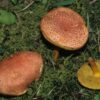
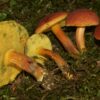
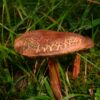
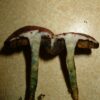
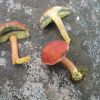


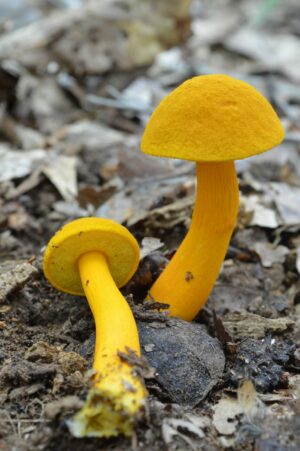
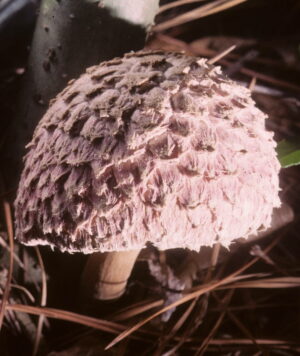
Got something to discuss?
Can you eat this mushroom ?
Edibility: Good. (B. rubellus was listed as “unknown” in the field guides, but B. fraternus, the merged name, was known to be a good edible).